What Size Solar Array Is Needed to Charge 3.5kwh Batteries
When planning to power your energy storage with solar, one of the most common questions is: what size solar array is needed to charge 3.5kWh batteries? The answer depends on multiple factors such as sunlight availability, efficiency losses, battery chemistry, and daily usage patterns. Choosing the correct size ensures your system is cost-effective, efficient, and reliable. In this guide, we will explore everything you need to know about sizing a solar array for charging 3.5kWh batteries, from the basics of solar energy to practical examples for real-world applications.
- Understanding Battery Capacity and the Right Size Solar Array
- How to Calculate the Correct Size Solar Array
- Recommended Size Solar Array for Different Locations
- Choosing the Right Solar Panel Size
- Factors That Influence Solar Array Size
- Optimal Size Solar Array for Fast Charging
- Off-Grid Systems and the Right Size
- Cost of Different Solar Array Sizes
- Maintenance and Longevity Based on Size
- Future Trends in Solar Panel Size and Efficiency
- Choosing the Right Size Solar Array
Understanding Battery Capacity and the Right Size Solar Array
Before deciding what size solar array is required, it’s important to understand what a 3.5kWh battery represents.
What Does 3.5kWh Mean?
3.5 kilowatt-hours (kWh) is a measure of stored energy.
It equals using 3500 watts of electricity for one hour or 350 watts for 10 hours.
This amount of energy can power a refrigerator for a day, several lights, or even small appliances.
Why Size Matters
Choosing the wrong size solar array can lead to undercharging, which shortens battery lifespan.
Oversizing the solar array may lead to wasted power unless you add more storage.
Proper sizing balances cost with functionality.
How to Calculate the Correct Size Solar Array
The process of determining the correct size solar array involves looking at sunlight hours, efficiency, and desired charging speed.
Step 1: Daily Energy Needs
If you want to fully charge a 3.5kWh battery in one day:
You need at least 3.5 kWh of usable solar energy.
Accounting for 20% system losses, the requirement increases to about 4.2 kWh.
Step 2: Sunlight Hours
In sunny regions: 5–6 peak sun hours/day.
In cloudy or northern areas: 3–4 peak sun hours/day.
Step 3: Solar Array Size Formula
Solar Array Size (kW) = Required Energy ÷ Sun Hours
Example in sunny area (5 hours): 4.2 ÷ 5 = 0.84 kW array
Example in cloudy area (3 hours): 4.2 ÷ 3 = 1.4 kW array
So, depending on your region, the size of the solar array should be between 0.8 kW and 1.5 kW to fully charge a 3.5kWh battery daily.
>>See also How Long a 35kwh Battery Will Last
Recommended Size Solar Array for Different Locations
Because sunlight varies by geography, the size of the solar array must be adjusted.
Sunny Climates (California, Australia, Spain)
Average: 5–6 sun hours daily
Recommended Size: 0.8 to 1.0 kW array
Moderate Climates (Europe, East Coast USA)
Average: 4–5 sun hours daily
Recommended Size: 1.0 to 1.2 kW array
Cloudy or Northern Climates (UK, Germany, Canada)
Average: 2.5–4 sun hours daily
Recommended Size: 1.3 to 1.5 kW array
Choosing the Right Solar Panel Size
The size of each solar panel determines how many panels you’ll need for the array.
Typical Solar Panel Ratings
250W panels – older, cost-effective
400W panels – modern, efficient
500W+ panels – premium high-output
Example Calculation
If you need a 1 kW array:
With 250W panels: 1000 ÷ 250 = 4 panels
With 400W panels: 1000 ÷ 400 = 3 panels
With 500W panels: 1000 ÷ 500 = 2 panels
So, the total size of your solar array depends both on your battery capacity and the type of panels you choose.
Factors That Influence Solar Array Size
Even if calculations show a certain number, real-world performance means you may need to adjust the size of your solar system.
Key Influencing Factors
Battery Type – Lithium-ion batteries can charge faster and more efficiently than lead-acid.
System Losses – Inverter efficiency, wiring resistance, and temperature losses affect output.
Shading and Orientation – Panels facing south (in the northern hemisphere) are more efficient.
Usage Patterns – If you use power during the day, you may need a larger array to meet charging + usage needs.
Optimal Size Solar Array for Fast Charging
If you want to charge a 3.5kWh battery in less than one day, the size of your solar array must be larger.
Half-Day Charging
Required energy: 4.2 kWh in 2.5 hours (sunny regions).
Array Size: 1.6–2.0 kW.
Emergency Fast Charging
For cloudy conditions or critical systems, oversizing to 2.5–3.0 kW ensures quick top-ups.
Off-Grid Systems and the Right Size
For off-grid applications, the size of your solar array must cover both storage charging and real-time usage.
Example Off-Grid Setup
Daily household use: 5 kWh
Battery storage: 3.5 kWh
Total energy demand: ~8.5 kWh
In 5 sun hours: Array size = 8.5 ÷ 5 = 1.7 kW
This shows how the required size grows when additional loads are factored in.
Cost of Different Solar Array Sizes
The cost of the solar array depends on its size and panel quality.
Estimated Costs (without storage)
1 kW array: $1,000 – $1,500
1.5 kW array: $1,500 – $2,200
2.5 kW array: $2,500 – $3,500
Investing in the right size ensures the balance between affordability and performance.
>>See also How Long a 5kwh Battery Will Last
Maintenance and Longevity Based on Size
The size of your solar array does not change maintenance requirements drastically, but bigger systems require more frequent checks.
Maintenance Needs
Panel cleaning every 3–6 months.
Inverter inspections yearly.
Performance monitoring via apps.
Larger size systems may require more space and roof reinforcement.
Future Trends in Solar Panel Size and Efficiency
Technology improvements are reducing the required size of solar arrays to produce the same output.
Innovations Ahead
Higher efficiency panels (22–25%).
Bifacial panels capturing sunlight on both sides.
Integrated storage reducing total array size needs.
This means that in the future, the size of solar arrays needed to charge 3.5kWh batteries will continue to shrink.
Choosing the Right Size Solar Array
In conclusion, determining what size solar array is needed to charge 3.5kWh batteries depends on location, sunlight, and charging goals. While theoretical calculations suggest 0.8–1.5 kW arrays are sufficient, real-world factors often make slightly larger sizes more practical. Oversizing ensures consistent performance, faster charging, and future flexibility.
If you are planning your solar investment, remember that choosing the right size array is not just about charging batteries but about ensuring reliability, efficiency, and long-term savings. With the right system, your 3.5kWh batteries will always be ready to deliver clean, renewable energy when you need it most.

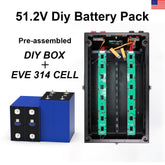

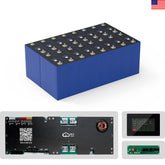

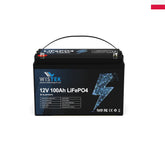
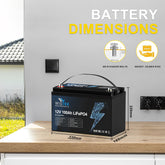
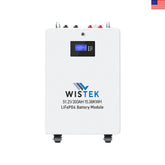

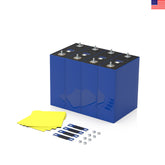
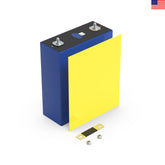
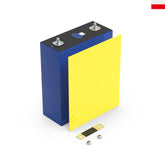

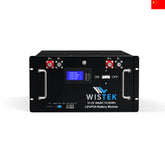
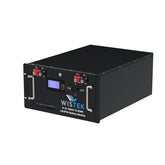
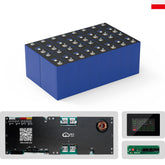



Leave a comment
All blog comments are checked prior to publishing